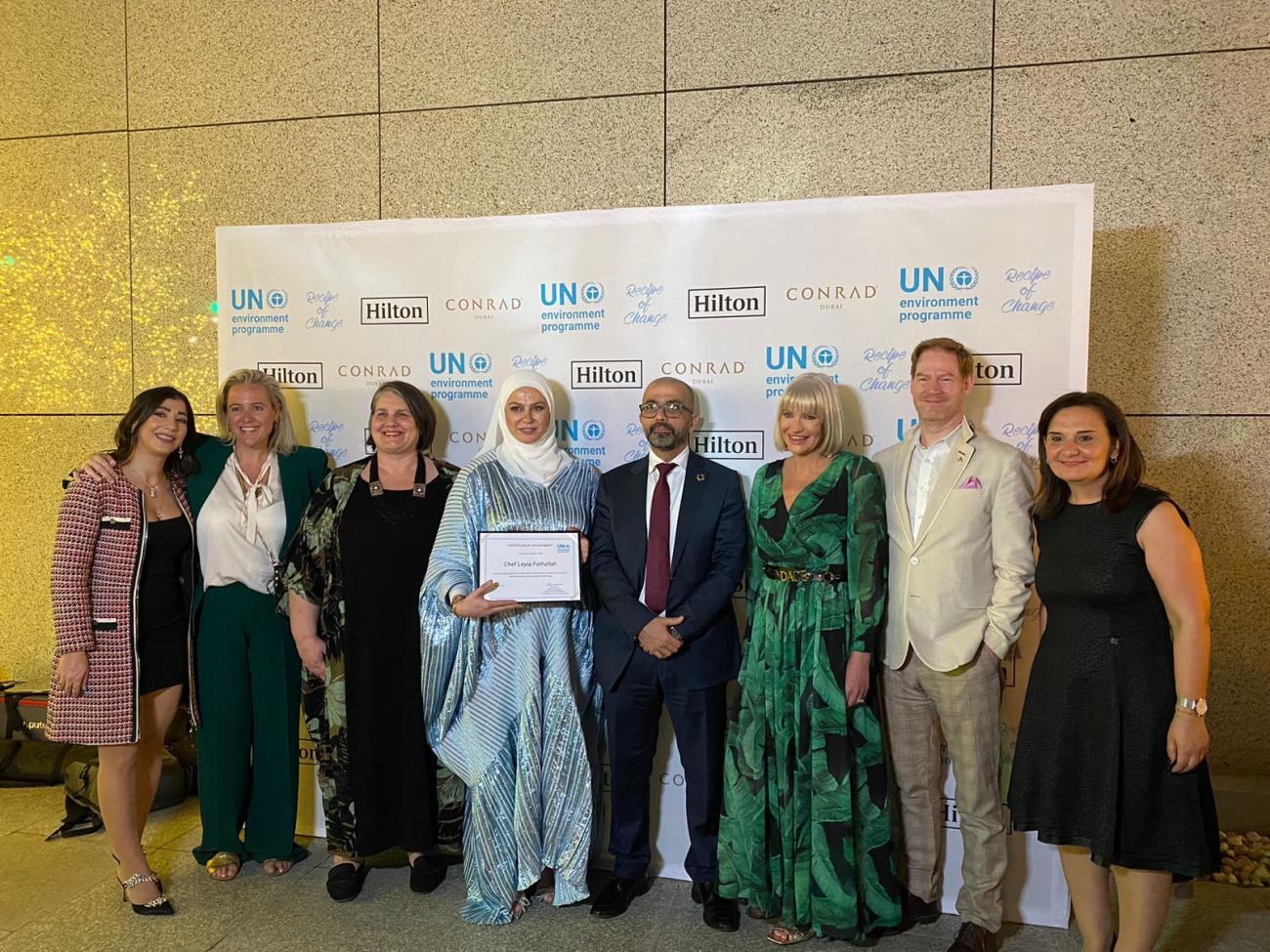West Asian chefs take on fight against food waste

The UN Environment Programme (UNEP) has appointed renowned Lebanese Chef Leyla Fathallah as its new advocate on food waste in the West Asia region.
As the world is trying to achieve Sustainable Development Goal 12.3 – on halving global food waste per capita at the retail and consumer levels by 2030 – Chef Leyla’s appointment as UNEP's new advocate on food waste in the West Asia region, aims to call attention to the need to the fight against the problem of food waste in a region which relies on food imports and where evidence shows wastage of large quantities of food.
Dubai-based chef and television presenter Leyla Fathallah recently came across a bowl of grapes that were starting to turn. But instead of throwing them away, she rolled them into a brioche and posted a picture of it on Instagram, where she has 1.3 million followers.
“I got so many comments of people saying ‘Please keep giving us ideas for how to use left-over food,’” said Fathallah.
As the founder of the recently launched Fitkult, which makes ready-made meals, food waste has become a daily preoccupation for Fathallah. Her company prepares three dishes a day for her growing list of clientele. She has learned to calculate the exact amount of ingredients needed for each meal so that her chefs never cook more than is necessary.
Fathallah is part of a growing number of chefs who are trying to counter what they call an epidemic of food waste in West Asia, where an estimated one-third of all food is squandered. The wastage is taking a needless economic and environmental toll on a region already contending with poverty and climate change, say those in the industry.
Food waste isn’t only a problem in West Asia. According to the United Nations Environment Programme (UNEP) 2021 Food Waste Index, almost 1 billion tonnes of food waste was generated in 2019 alone. More than 60 per cent of that came from households, 26 per cent from the food service sector and 13 per cent from retail. In all, the report found 17 per cent of food, from farm to table, goes to waste.
These figures are particularly hard to swallow given that an estimated 3.1 billion people worldwide do not have access to a healthy diet and some 828 million people go hungry. That, the Food Waste Index found, undermines progress on the UN Sustainable Development Goalsrelating to poverty, hunger, inequality and responsible consumption and production.
When food is wasted, all of the resources that went into producing it, such as water, energy for transportation and land are also squandered. Additionally, much of the food that is thrown away ends up in landfills where it decomposes and produces methane, a potent greenhouse gas that contributes to the climate crisis.
An estimated 34 per cent of all food in West Asia is squandered, according to a 2021 report from UNEP on food waste in the region. This is taking place in a part of the world that can scarcely afford it, said Sami Dimassi, UNEP regional director for West Asia.
“The region is heavily reliant on food imports and is also among the most vulnerable to the impacts of climate change due to scarce natural resources, such as water, and limited adaptation capacities,” says Dimassi.
There are many contributors to food waste globally. These include poor planning on how much food is needed when shopping, improper storage and freezing and cooking or serving too much food.
There are also cultural influences that might contribute to West Asia’s high food waste, say those in the industry. Issa Albalushi is a chef at Al Mouj Golf Restaurant in Muscat and the president of the Oman Chefs Guild. He often sees food go to waste at social events, like weddings.
Albalushi said food waste was once common at his restaurant, which serves 200 people on an average day and up to 1,000 for special events.
However, he has recently instituted a new system to track the exact weight of the ingredients in each dish. His staff also separate leftover food into two categories: food that has not been served to customers is donated to disadvantaged communities, and food that has been served is divided into meat and vegetables to be fed to livestock and pets. This reduces the amount of food that ends up in landfills producing methane, a potent greenhouse gas.
Reducing food waste is a critical part of countering climate change. Squandered food accounts for 8-10 percent of global greenhouse gas emissions, contributing to an unstable climate and extreme weather events, such as droughts and flooding.
To raise awareness about the consequences of food waste, in 2019 UNEP and The Food and Agriculture Organization of the UN launched the International Day of Awareness of Food Loss and Waste.
UNEP also launched the Recipe of Change Campaign, which encourages consumers in West Asia to be conscious of food waste. The initiative is designed to accelerate progress towards achieving Sustainable Development Goal 12, which covers sustainable consumption and production.
As well, a UNEP initiative, Global Opportunities for Sustainable Development Goals, helped 25 countries in Asia Pacific, West Asia, Africa, and Latin America and the Caribbean develop national strategies to reduce food loss and waste.
For many, combating food waste might seem like an overwhelming task that is best left to governments and institutions. However, for Leyla Fathallah, the process starts in kitchens. “It just takes a bit more work, creativity, and experimentation. Teach your kids these skills so they can learn the habit of not wasting food.”
Original story published by UNEP West Asia, available on their website.




